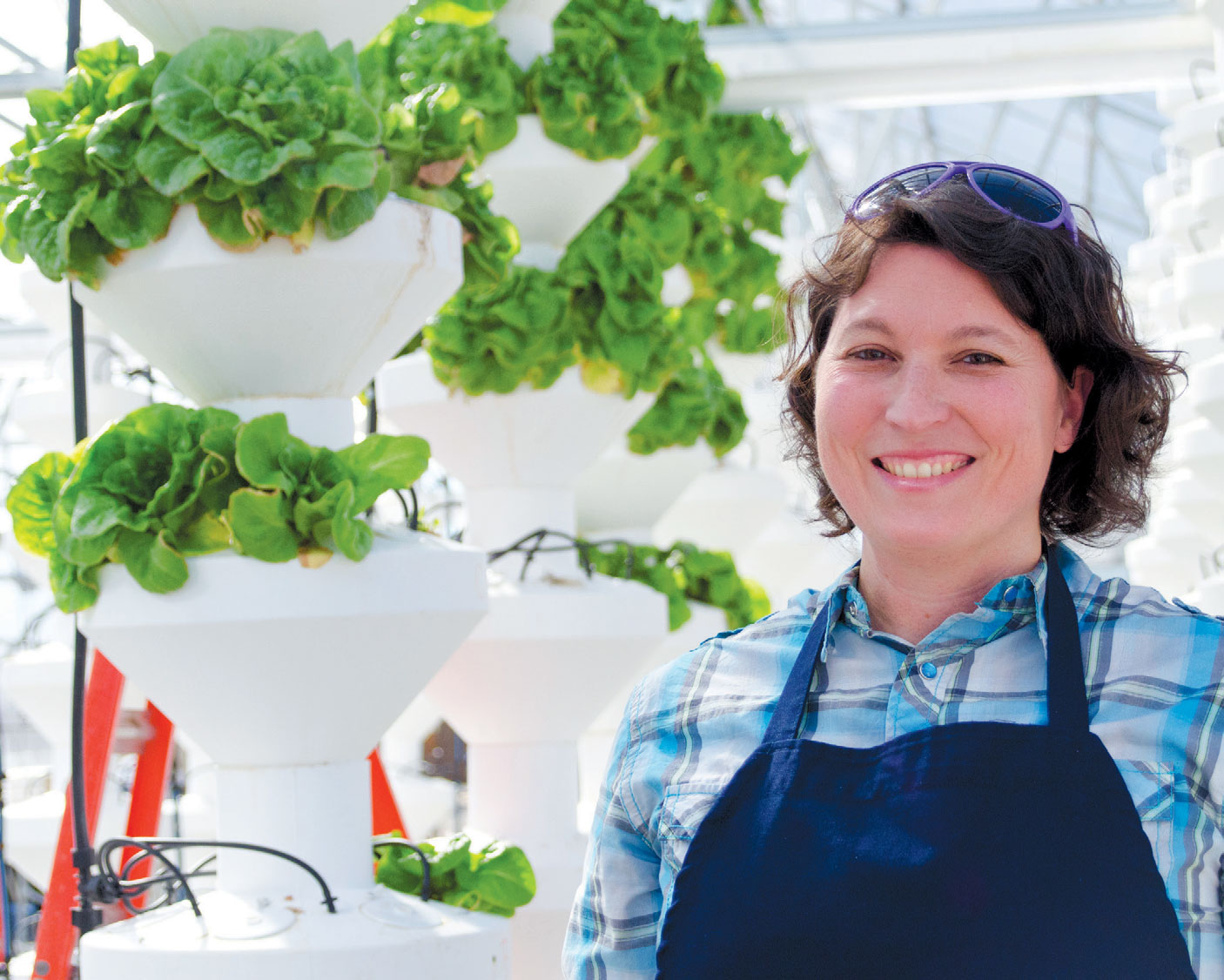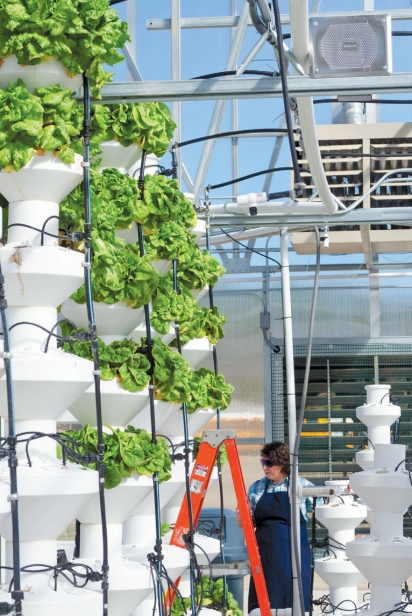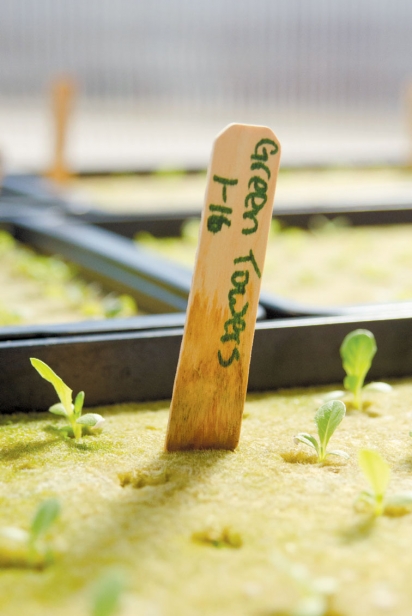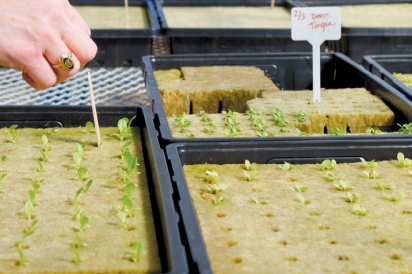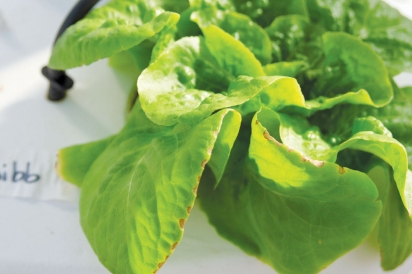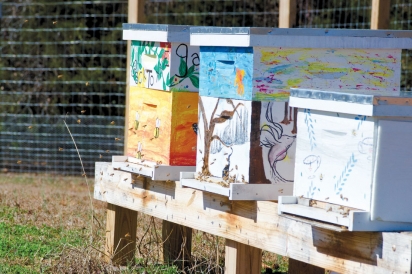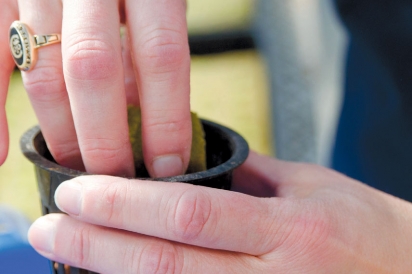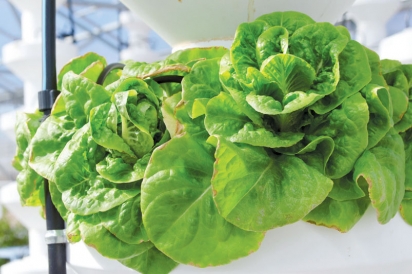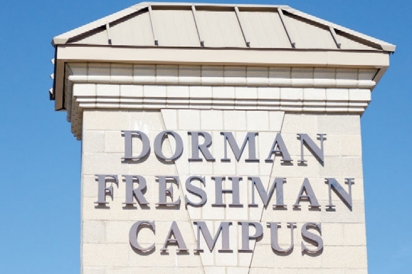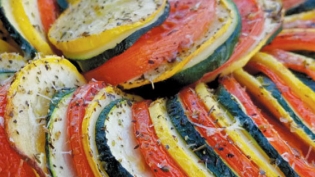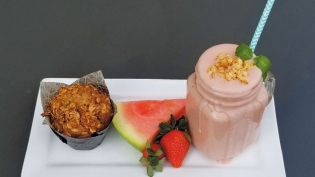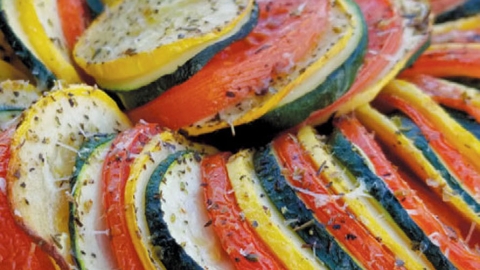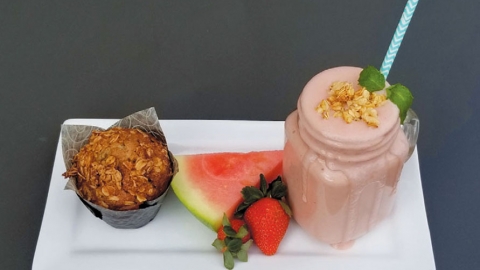Cafeteria Crops
Move over, lunch ladies of yesteryear. The school lunch we all remember—rectangular pizza, tossed salad, corn, and box of chocolate milk—is being replaced with fresh produce grown on-site at a local high school.
On a recent sunny morning, I hop into the passenger seat of a utility vehicle and am soon bumping alongside newly-turned fields prepped for planting at Cragmoor Farm. I was told there were honey bees behind the supply shed and I’ve convinced Dorman High School’s farm coordinator Dylan Nitzkorski to show them to me.
“We tried growing carrots over there,” he yells over the motor, motioning to the field lying dormant under a crop cover of cowpeas. “I lost a bet with the superintendent over that one. The soil down here just isn’t right for carrots.” The same for potatoes I learn, which is unfortunate because they go through almost 100,000 pounds of tater tots in a year.
“They” are the thousands of children, teenagers, and employees of Spartanburg School District 6, who will soon reap the benefits of lunches (and breakfasts and pregame meals) prepared with organic produce from their very own district farm and greenhouse.
While we watch the bees buzzing in and out of their boxes (embellished with paintings by art classes, of course) Dylan helps me see that this is so much more than a precious classroom garden. “Our district’s mission is ‘children first’—we want to do what’s best for the kids. The administration wanted to get away from contracted food service because the USDA guidelines were changing, going towards more scratch-made food in cafeterias. Meanwhile we wanted to bring in more organic items. It made good financial sense to cut out the middleman and grow our own.” Dylan looks back at the on-site processing facility where the produce is washed and prepared for distribution, fitted with enormous walk-in coolers. “We bring it in the front, the wholesale trucks pick it up in the back.”
It just seemed meant to be. Not all school districts work like District 6, where 11 elementary and eight middle schools funnel into a collegiate-style main campus like Dorman High School, educating over 2,300 students. And not all farm managers are like Dylan: spending years with the Peace Corps, teaching sustainable farming practices to African countries before coming on staff with South Carolina’s Department of Education..
Not long ago, Dorman High was referred to as the “farmer school” to the city-fied Spartan High. These days, Dorman teens ironically don overalls during their rivalry week, aptly known as “Farmers Week.” Most of these kids are more adept at maintaining a Snapchat streak than turning compost piles. But that is changing; you can feel it in the air out here.
Only a few miles away from campus, all 120 acres of Cragmoor Farm belonged to historic Walnut Grove, a portion of the original land deeded from King George the Third in 1763. The previous owners wanted their land to be preserved for public use. This combined partnership with the school district, Spartanburg County Foundation, and Upstate Forever is, as they like to say, a school farm two hundred years in the making. A legacy to the future of the community, and one of only two of its kind in the state.
After the conservation easement was granted in May of 2016, the district wasted no time building a greenhouse on campus, tilling six acres of farmland and planting 30,000 transplants. Throughout that first summer and fall, utilizing student employees when possible, the farm produced tomatoes, onions, watermelons, cabbage, broccoli, collards, and so much squash. “We filled the freezers with squash,” Dylan admits. (Squash overwhelms us all it seems.) A small Saturday farmers market shares the harvest with the community.
A so-crazy-it-just-might-work idea like a school district farm may seem like a hard sell from an administrative standpoint. But then there’s district superintendent Dr. Daryl Owings—not just on board from the beginning, but the catalyst for the program’s inception. His support continues, greenhouse manager and classroom teacher Liz Morton agrees. “He’s always calling me up, asking ‘what do you all need?’ Not the other way around,” she says. “His support is really what got all of this going.”
When I first heard mention of the greenhouse, I envisioned a small hoop house like something in a home gardener’s backyard. But when I pull around to the back of Dorman’s freshman campus, the steel and plexi structure stands out. These people aren’t messing around.
Inside, a network of white aquaponic towers burgeon with tiers of gorgeous, delectably green varieties of romaine and bibb lettuces. One tower is reserved for fresh herbs: thyme, basil, parsley. By next school year, this system will operate in five-week planting-to-harvest rotations, providing plenty of organic, fresh local greens to all district schools. I imagine how inviting the salad bar must be, the cafeteria steps away from this greenhouse door.
And that’s only the half of it. Liz walks to the other side of the space reserved for seeding transplants for the farm. Earlier in the day, a class of 18 teenagers worked to plant trays of starters which will sprout into 2,600 broccoli plants for the farm.
Here’s where the program puts their investment where their mouths (literally) are. During the summer, the marching band participated in an impromptu taste test of sun gold tomatoes. The teens coming through the lunch line reluctantly took one or two, but then came back for more and more, loading their t-shirts with tomatoes so they could snack on the harvest on their way back outside for practice.
Students at Dorman and adjoining RD Anderson technical school participate in the entire process—seed to lunchroom table—experiencing unequaled hand-to-mouth pleasure. Liz laughs: “I tell my classes all the time that without agriculture, we’d all be naked and hungry.” The lessons of cooperative learning, the mathematics involved in planning, even the poetry of harvesting—it’s an educator’s dream come to fruition.
As an agriculture teacher, passing along this information is vital to Liz. “It’s important,” she explains, “for students to know where food comes from. They just think it comes from the grocery store. But to see the entire process... they understand all of the hard work that goes into it. This encourages them to make good food choices. We are feeding the mind and the body.”
The right people, the right land, the right time.
For Dylan, Liz, and the rest of the farm to school team, they’re busy looking ahead. “We’re thinking through now: what can we feasibly grow?” Dylan has the greenhouse door open; it’s obvious there are things to get done. The planting season is ahead, in more ways than one. Move aside, rectangle pizza.
What is the farm to school system?
• Started in 2011 alongside the USDA’s new school lunch program guidelines (which encourage more scratch-made food in cafeterias while improving student nutrition).
• Includes farmer profiles and partnerships state-wide to connect local farmers with school food services.
• Offers seasonal recipes for produce as well as charts and information on what’s in season locally.
• Encourages taste testing in cafeterias and classrooms.
• Encourages planting school gardens to educate children on the seed to harvest journey of their foods


